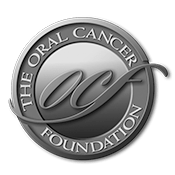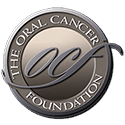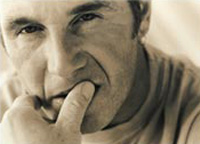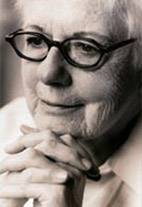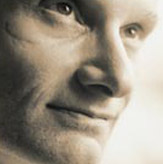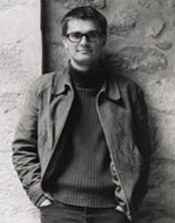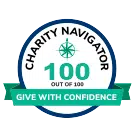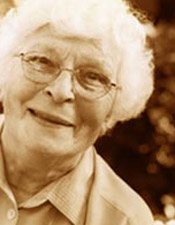
Kathleen Conway, a psychotherapist, developed lymphoma as a graduate student, and breast cancer in her early forties. Married with two young children, she wrote a remarkably honest story, Ordinary Life, of her reactions to having a mastectomy and chemotherapy. The book details her anger, her depression, and the feeling of having lost her “ordinary life.” Written day by day, it describes the daily hassles and stresses of carrying on with her family’s life turned upside-down. The stress was hard for her husband, who became fatigued, sometimes despairing, trying to support her while taking care of the children and working at his job. Kathleen was shocked when she read her diary, written a year earlier during her illness.
Certainly, I set out to write the truth about my cancer while I was still in its grip. I was passionate in my resistance to telling the story that other people seemed to want to hear—–of lessons learned, of cancer as a transformative experience. But having told my story, I now find myself startled by its fierceness, its raw and unrelenting character. I almost wish, when I read it over, that it had left me with more of a feeling of transformation.
When the experience of cancer and its treatment is over, it is easy to “rewrite history” and think of yourself as having been more wise, mature, and adaptive than indeed was the case. As with childbirth and other traumas, in retelling it you tend to color the experience as you want to remember it, and tell it to others in more acceptable terms. In fact, Kathlyn Conway said, “I doubt that I could write this book today
[nineteen months later]. I no longer feel as raw as I did then.Just as history books are written with the specific slant of the particular historian, so it goes with personal stories of illness. An account written as a daily diary is likely to be the most honest. And over time, some transformative ideas stay with survivors, some good and some “troublesome.” These notions are so common, you could almost call them universals (although absolutes about anything are not possible, especially in relation to human emotions).
Brooke, had a mastectomy at mastectomy at fifty-six, followed by adjuvant chemotherapy (meaning that it was given as part of the initial treatment) for early breast cancer. She continued to work as an interior designer during the chemotherapy, despite being tired. She initially had a hard time adjusting to her “new body” and joined a support group for breast cancer patients and survivors. She found it helpful hearing others describe how they got past the hair loss and adjusted to wearing a wig. She began an exercise and diet routine to keep her weight stable, since women gain weight during chemotherapy and often find this an additional problem to deal with. Though she hardly wore makeup at all before her bout with cancer, members of her group suggested she wear more makeup and brighter clothes, both to keep up her spirits and to give her pale look more color. Her husband was very supportive throughout her treatment for cancer, and they both felt that they became closer because of the experience.
At the end of a year, Brooke’s appearance and energy level had returned to normal, but her psyche had not. As the time approached for the landmark one-year follow-up visit to her doctor, Brooke recognized that she had suddenly become anxious and irritable and was sleeping poorly. She said, “I feel well, and I usually don’t worry about my health. But when the flu was going around my office, and I started feeling achy all over, I thought, What if it’s not the flu? What if the cancer’s come back? I worked myself into a real panic. Then I started wondering, What if they didn’t really get it all? What if I’m not cured? My husband tells me it’s all in my head. There’s nothing wrong with me, and I’m just obsessing”. He says, “You beat it. Be grateful, and move on.” “But I’m not sure. I called my doctor, and she said it was nearly time for my next checkup so why didn’t I just come in now? I scheduled an appointment for next week, and I haven’t been able to sleep ever since. All I think of is: What if they find something? The crazy part of this is: I feel fine. My life is great. I’m just so terrified that at any moment I could lose it all.”
Brooke’s story exemplifies a common phenomenon. It is expected that patients would be jubilant on finishing treatment, in fact, the opposite sometimes occurres. They can have a paradoxical increase in distress just after treatment, related to a feeling of vulnerability. Two main factors cause this new and unexpected anxiety: the fear that the cancer could come back now that they were without the protective effects of treatment, and the fear that they were not being watched as closely by their doctors.
Most cancer survivors typically experience what Brooke went through, wondering, “Did I have cancer, or do I still have cancer?” Another cancer survivor put it this way: “I think I’ll never feel as confident about my life, myself, and the future, as I did before I had cancer.” This common feeling in survivors is called the Damocles syndrome. According to the Greek legend, Damocles, a courtier to the tyrant Dionysius, the Elder of Syracuse, extravagantly praised his sovereign, who invited him to a sumptuous feast. However, during the entertainment, Damocles looked up and saw that Dionysius had seated him directly beneath a sword that was suspended from the ceiling by a thread. For Damocles, this sword was a symbol of the precariousness of life and how one’s fortune could shift from being in favor at court to falling out of favor, causing the sword to fall down one’s head. For people who have had cancer, that sword represents the frailty and precarious nature of life itself. They continue to believe that the threat of recurring cancer and consequently, the threat of death, is always looming over them.
Usually, this fear slowly recedes as the time from diagnosis and treatment increases. But the fear exacerbates just before follow-up visits, scans, and tests for cancer. It also may reappear around significant anniversaries related to the cancer, such as the day of the diagnosis or the surgery.
“I can’t get the cancer out of my mind. It keeps coming back with the silliest reminders,” said Martina, a young woman who survived uterine cancer. Rather than silly, these are normal and ubiquitous concerns; unfortunately, they “go with the territory.” They, too, get better over time. Dr. Christopher Gates, a psychiatrist, helps the person to conceptualize these fears by saying:
Just imagine with me that your frightening thoughts are like voices on a radio. They can be controlled by changing the volume. When the volume is up too high, the noise (your fear) is so loud you can’t hear or think of anything else. But you can turn the volume down, so low that you still hear the noise (your fear) in the background, but it doesn’t bother you so much, and you can concentrate on other things.
This “mind-gimmick” is helpful since it also implies that those “gremlins” are always going to be there after cancer. They never completely go away, but they can be turned down so they can be tucked into the far corner of your brain where they aren’t “noisy.”
Even individuals who went through their treatment years ago may still find it frightening, even terrifying, to go to their doctor. Other events may reawaken these fears, such as media coverage of the illness or death from cancer of a prominent figure, as when George Harrison died from cancer. On the other hand, cancer success stories such as that of Tour de France cycling champion Lance Armstrong, a testicular cancer survivor, can inspire and give hope to people with cancer and their families.
It’s best to approach predictable, anxiety-provoking periods by talking about them with others: family, friends, support group members, or a psychotherapist or counselor, if the anxiety interferes with normal activities. It is helpful mentally to “count to ten” and recall, rationally, that your tests have been negative, you feel fine, and the fears are coming from an external stimulus. Severe and persistent fears, however, should prompt a consultation with a mental health professional, with whom you can try some mental relaxation techniques. If anti-anxiety medication is needed, consultation with a psychiatrist will be helpful.
Am I a cancer patient or a cancer survivor?
There is a lot of debate about who qualifies as a cancer survivor. Researchers who study long-term effects of treatments define a survivor as a person who completed treatment at least five years ago and has no sign of cancer. But the National Coalition for Cancer Survivorship (NCCS), an advocacy group composed of cancer survivors, says that a far better way to define survivor is to assume that one is a survivor from the day of diagnosis. Dr. Fitzhugh Mullen, the physician and cancer survivor who established the NCCS, says that there surely are different “seasons of survival,” but each is, indeed, survival. The first season is surviving the treatment; the second season is beginning to return to normal life; and the third is the long-term adjustment during which the cancer comes to be viewed as an episode in the bigger context of one’s life.
What “psychological baggage” do you carry around with you? What are your worries about the possible long-term medical problems? What happens to family relations? How does having had cancer affect your perspective on life and its meaning? What happens to your sense of the future? What happens to your ability to become close and intimate with someone? It is safe to plan a marriage and have children? This baggage is the downside of the remarkably good news that there are, today, nearly eight million cancer survivors, as more cancers respond to new therapies.
The question about the human side of survivorship can be placed under the larger topic of “quality-of-life” issues: How well are you able to function in physical, psychological, social, work, and sexual terms, compared with how you functioned before your illness? One of the breakthroughs concerning the human side of cancer has been the ability to measure and put realistic numbers on a person’s functioning in these domains of living, which represent, collectively, quality of life. Now when a new treatment for cancer is tested against an older one to determine which of the two treatments is better, doctors not only look at how much longer people survive with each treatment, but also determine how well they have survived during that time.
The interest in the quality of life also extends to the study of survivors. In fact, the National Cancer Institute established an Office of Cancer Survivorship in 1997 to give proper attention to this area.
In the days when cancer was almost uniformly fatal, a survivor was so rare that any complaint by the patient was countered with “You should just be thankful you’re alive.” The focus of the oncologist then was to reverse the balance that most often resulted in death and make it possible to become a survivor. They had a little time to delve into the problems that the few survivors had, like trouble getting a job because the assumption was they would die, sexual problems, or problems adjusting to physical losses, like a limb or a breast.
The picture started changing in the 1950s and 1960s, when a remarkable increase in survival from several tumors of children and young adults occurred. Suddenly, children with acute lymphocytic leukemia were being put in remission, and remained so years later following combination chemotherapy (several drugs given together). Between the mid-1960s and now, the five-year survival rate for Hodgkin’s disease rose from 5 percent to greater than 90 percent for Stage I disease, owing to a combination chemotherapy regimen (called MOPP, for the names of the drugs used). Testicular cancer became largely curable in young men. With these changes came a new concern, one that had not been possible before: What were the problems associated with the treatments, and how could they be reduced? For example, early treatments for childhood leukemia included radiation to the brain to prevent the leukemia cells from being sequestered there, where they might re-grow at a later time, but it caused some children to have trouble with learning and performance at school. Could the radiation be eliminated and still effect a cure in the children? This has indeed happened.
Chemotherapy for Hodgkin’s disease caused infertility. Could every young man with Hodgkin’s be asked to bank sperm, and could a regimen be found that did not cause infertility? Both changes have occurred: Teenage boys and men with Hodgkin’s disease can bank sperm before undergoing high-dose chemotherapy. And the Hodgkin’s disease MOPP regimen, which caused sterility most of the time, is being replaced by the ABVD regimen, which is as effective but does not cause sterility.
For the first time, the focus of medical efforts was on survivors: keeping the cure rates high, while reducing the negative impacts of treatments. It was during this exciting period of change in the 1970s that interest in psychological issues developed. It was a new era of concern for the human side of cancer.
The tyranny of statistics
One of the burdens cancer survivors often carry, is information about the statistics for survival for their particular cancer. The question so often asked by a person who receives the diagnosis of cancer is, “What are my chances, Doc?” No matter what the answer is, anything less than 100 percent survival (which is, of course, what everyone wants to hear) leads to the nagging fear of “which group am I going to be in, the 50 percent who make it for the 50 percent who don’t?” The numbers that a doctor gives a patient are based on the expected average survival at a particular time, often five years. The trouble with statistics is that no one person is the exact “average.” So the numbers become another monkey on your back, an added fear to deal with. Doctors want to be honest and sometimes give the range from the shortest to the longest likely survival; while they are telling you the truth, they can’t tell you exactly where you will fall. You can’t take the quoted average survival time too gloomily. It’s an average, and patients are individuals, not statistics.
It’s helpful to talk with survivors who, twenty years later, can describe the dire “you have six months to live” prognosis they were given. They understand the burden of the statistics they were saddled with. Many of these people have donated their time and energy to making sure that other cancer patients get good information, good treatment.
Natalie Spingarn is one such twenty-year-plus survivor of metastatic breast cancer. She is a writer in Washington, D.C., and the author of The New Cancer Survivors, which is an excellent book on the human side of cancer. She is a founding member of the National Coalition for Cancer Survivorship (NCCS), writing and speaking often as an advocate for patients.
Richard Block, founder with his brother of the H & R Block firm for tax preparation assistance, is a survivor of lung cancer of twenty-plus years. He was told, “Go home and write your will; there is no treatment for your problem.” He refused to accept that verdict and, with his wife, Annette, sought out the best cancer centers. He was treated and is healthy and working hard to ensure that patients with cancer get accurate information. He and Annette established a center in Kansas City where patients are seen by consultants in surgery, oncology, and radiotherapy. Several years ago, he gave the National Cancer Institute the funds to start a service to provide updated information to patients on which centers have protocols to treat specific tumors. The result was the 1-800-4-CANCER telephone number, which is accessible, in user-friendly language, to anyone. He and Annette have written about their experiences, and are ardent activists. Richard feels keeping hope alive is a critical part of the human side of cancer.
There are many disease specific organizations of survivors who want to “give back” by helping new patients, and both benefit. Volunteers act as “buddies” or guides, who speak with the authority of having “been there.” Consequently, they share their experiences and offer their tried-and-true advice on coping as well as practical tips, such as where to shop for wigs and prostheses, how to get ostomy appliances, and how to deal with fatigue and worry. And they offer that “gift of hope,” by their very presence, as a survivor of the same cancer.
In a lecture at the Weil Medical College of Cornell University, Susan Sontag, author of Illness as Metaphor, spoke about how her experience with breast cancer, twenty-four-years ago, led her to write this important book. She was given a pessimistic prognosis but pursued aggressive treatment and is alive these many years later. She felt that the prevalence of cancer as a metaphor for bad things in society made the burden of cancer even greater for patients and survivors. Her writing and public speaking about her experience give testimony to the fact that statistics about prognoses can be pretty meaningless. She also decries the idea that personality could be the cause of cancer – or the cure. Cancer is just another disease and is better left free of such implications, she believes. “The bottom line is that statistics are just statistics. Prognosis are based on ballpark averages and should be kept in perspective, because each of us is unique”.
“Am I cured?” is the big question for most survivors. Of course, everyone wants to hear the answer “yes!” Today, few oncologists are comfortable telling their patients they are cured, because it implies an absolute certainty that is anathema to these scientifically trained clinicians. They prefer terms like “likely cured” or “no evidence of disease” or “long-term remission.” This approach often frustrates and angers patients, who want a sure answer. Here is one of those instances in which the profound uncertainty of living with cancer is deeply felt, and the doctor’s words don’t always reassure the patient. The desired assurance is withheld in the service of not promising something one isn’t sure about. Hope, that sustaining feeling, is muted by the caution of the doctors.
Cancer survivors usually have follow-up visits scheduled every three months for the first year after treatment ends, and every six months thereafter, depending on the tumor, with repeated bone and CT scans. This sometimes creates the impression that the cancer is lurking about and the doctor is expecting it to reappear. There has been some debate as to whether survivors are followed at too frequent intervals. Given present knowledge, however, it is better to know early if the tumor has come back, so that something can be done. Consequently, we are caught in the vise of sacrificing the sense of security that would come with less frequent follow-up, for the repeated anxiety that precedes the more frequent follow-ups, which usually net negative results, but that would pick up early recurrence. We are left with finding ways to control the anxiety that accompanies the checkups.
Physical problems of survival: The downside of treatments
Some cancer treatments produce few long-term, physical side effects, whereas others take a toll on your ability to function normally. These side effects of course, add to the psychological burden, based on what they are and what function they impair. These visible signs of cancer, with which people live out their lives, create a stigma: People perceive these survivors as “different.”
Dr. Alice Kornblith, a research psychologist who has studied survivors, uses the concept of stigma proposed by sociologist Dr. Erving Goffman. He noted that the more people are obviously different than others, the greater it is for them to be stigmatized and isolated. The operations that produce visible changes in appearance and permanent disability, such as: limb amputation; mastectomy; surgery around the face and head; loss of the voice box; colostomy; removal of the cervix, uterus, or ovaries; and removal of the testicle, lead to more stigma.
Radiation and chemotherapy usually cause less obvious and visible changes, but these treatments may result in impaired function. For example, some chemotherapy regimens can result in damage to the brain, liver, or kidneys, as well as to sexual and reproductive function for both men and women, causing long-term problems. As vexing as these problems can be, they are sometimes the unfortunate downside of the treatments that make it possible to be a survivor.
A potential and devastating effect of both radiation and chemotherapy, is that they can, years later, result in second tumors. This explains the great interest in and increasing research into long-term effects, especially in childhood survivors, who can expect to live out a full life span. The Children’s Cancer Group, a large cooperative group composed of most academic pediatric oncologists in the United States, is currently studying about twenty thousand children treated by protocols over the past decade. They will follow these survivors carefully to look for the factors associated with impaired function or second malignancies and impaired quality of life. This research will be the basis for altering treatment regimens to maintain the gains in survival but reduce the risk of future harm.
Karen Swymer is an inspiring cancer survivor who was diagnosed with Ewing’s sarcoma in the right forearm in 1980, the day before her eleventh birthday. Here is her story in her own words:
My consciousness began on June 30,1980. The doctors asked if I had ever had the measles, chickenpox . . . then they told me what I did have. My mother looked at me and said, “If I could do this for you I would.” And then I started chemo the day of diagnosis. After my first chemo, my parents carried me out of the hospital. I felt like a train ran over me. I had chemo every two and a half weeks. Then I did whatever it took to get back to school on Monday. I wanted to be around kids. I didn’t want to interrupt my life. For two weeks we’d soar, and then for a week or so I’d be sick, and we’d cope with it. In those days there were no medicines to keep you comfortable like there are now. It was like a hell ride because I was so sick. I also had radiation every day for three months over the summer. I lost my hair for two years, from age eleven to age thirteen. That’s a tough time to be bald. People who are in your little circle of friends know you and love you. But if I was at the movies or the grocery store, people would stare at me. I always held my head up high, but people remind you you’re different.
Still, I had a wonderful little life. I played the flute. I was involved in student government. I was a normal child for all intent and purposes. When I was sick, people were not very open in terms of talking about disease. Families were very private. People coped very privately, particularly with pediatric cancer. Our family was like a little island. My parents and two sisters were always around me. I was never alone. After two years, my treatment was over. I went on to high school and then to Smith College. My cancer was behind me. It was something that made me different inside, but looking at me you’d never know. I worked extra hard, played hard, and loved twice as deeply. I loved every part of my life. I clung to my relationships, my future, and my family. I felt invincible. I felt that I’d seen worst life had given me.
After college, I lived and worked in Washington, D.C., at a public relations firm and then at a law firm. I started having discomfort in the arm where the sarcoma had been. It turned out to be a degenerative condition called necrosis, the dying of the bone. It was the result of the radiation I had received as a child. (When I received it, they were giving a lot more radiation in a larger area of the body than they do now. Over the years, they’ve learned how much is too much.)
So in the spring of 1993 they found a benign tumor in my elbow. So they reconstructed my elbow with part of my hipbone and put some metal hardware in there. I went off to law school in the summer. It was painful but I wasn’t worried about being sick. Eventually it got worse to the point that I could barely hold a pen. They removed the ulna [a bone in the arm] to reduce the chance of my getting sick and reconstructed the entire arm. But two months after starting my second year of law school, I had a malignant tumor in my elbow. It was an osteosarcoma, a different disease. And the cancer had metastasized to both my lungs. My chemo was more vigorous, with three out of every five weeks in the hospital and then two weeks off, for a year and a half. It physically beat me down. I had the surgery removing the tumor from both lungs, and I lost my right arm.
I was on the pediatric oncology floor even though I was twenty-five years old, to stay with the doctor who had treated me as a child at the Jimmy Fund in Boston. It’s very different when your doctor feels like your partner and listens to you and answers you. I don’t think much about losing my arm. It encompasses so little of my time and energy and thought. I’ve taught myself to write left handed, and every so often I’ll sketch and it makes me feel good. There’s nothing I can’t do. I just have to be more creative about how I do things. I don’t feel limited in any way. It’s a loss, but such an insignificant one to me. Recently, I went to get a key made. I was trying to put money back in my wallet one-handed. The guy at the store saw me and said, “I’m really sorry about it.” And I said, “Worse things can happen.”
I have peace of mind and heart that I did whatever it took to get better. Your spiritual presence comes forth and that’s how you survive. Physically I looked horrendous, but spiritually you couldn’t shake me. If God wanted me to do this every fifteen years, I wouldn’t be too happy, but I’d do it because I’ve had a great life. Karen Swymer returned to Boston College Law School in 1997 and graduated in 1999. She recently started her first job as an attorney in Worcester, Massachusetts. She frequently visits children with cancer in the hospital to give them hope.
The American Cancer Society, under the direction of Dr. Frank Baker, a psychologist, is undertaking a study of fifteen thousand survivors of the major cancers to assess the quality of their lives years after treatment. It is heartening that research in oncology is now targeting survivors to determine their physical problems, their health, and their quality of life. This is a far cry from the admonition, mentioned earlier, given to survivors twenty-five years ago, not to complain about a thing because “you should just be thankful you are alive.”
After treatment: Long-term survival
We have talked about the panicky feelings that plague many people when they finish treatment: the paradoxical increase in distress and vulnerability well characterized as the Damocles syndrome. These universals of early survival diminish over time. But in the longer term, how people get along depends on the mix of factors that contribute to how all of us manage: the combination of health, supportive family or friends, philosophical and spiritual resources, basic financial stability, and a satisfactory work life.
Giving Back
Often a person who has survived cancer has a desire to “give back” and seeks a way to do it. Many cancer survivors gain a sense of meaning and purpose in doing something for others with cancer. This is a remarkably important way of giving back because seeing and talking with a live human being who has beat the odds and survived your type of cancer, is a more tangible sign that you to can survive. It can be more important than any words of wisdom or encouragement from a doctor. It is truly a gift of hope and can be given only by someone who has been there. Hope is so important early on, and a volunteer, by his or her presence, makes a new patient feel, “If you made it, I can, too.”
For the volunteer survivor, the other side of giving back is the feeling of reward of having helped someone else with the same problem. Patient-to-patient volunteers frequently voice the conviction: “We [volunteers] get as much out of it [the encounter] as they [the patients] do.”
These convictions stem from various points of view, including these:
I wouldn’t want anyone else to have to go through what I went through,” says Mary, a breast cancer survivor in her sixties who had a mastectomy when such things were rarely discussed and when little support was available.
I kept thinking ‘something good’ has to come of this,” says Frank, a forty-year-old Hodgkin’s disease survivor. “I found the opportunity to help other patients is one of the good things that have come out of my cancer-and it’s enough for me.
This patient-to-patient volunteering constantly reminds me how strong I am, how much I have endured, and how far I have come,” says Lourdes, a sarcoma survivor. “I was just as scared as they are. Helping them gives me a sense of appreciation and gratitude for my own journey.
Work and insurance Issues
Charlotte, a thirty-eight-year-old saleswoman, completed her chemotherapy treatment for lymphoma one year ago. Since she returned to work, Charlotte says, “Everyone treats me funny. It seems like someone’s always telling me ‘You look great!’ which makes me think either I must have really looked great horrible when I was sick or that everybody thinks if you have cancer you’re supposed to look like death warmed over, so how come I don’t? People ask, ‘How are you?’ in this very pointed way, as if they’re assuming something must be wrong. Or they ask me if I’m too cold because of the air conditioning, or something like that. Actually, I’d be fine if people stopped relating to me like some kind of freak.”
Arthur, a thirty-year-old leukemia survivor, works as an attorney at large Wall Street law firm. He says, “I work in a very conservative firm. I got a lot of snide comments about my ‘buzz cut’ when I came back to work before all my hair had grown back from chemo. Like, ‘All you need to know is an earring and tattoo.’ I just didn’t feel like explaining and answering their questions.”
Through Arthur was on a fast track for a promotion, he feels that his advancement has been derailed by his illness. “I’m not getting the number or quality of referrals I got before I was sick,” he says. “At first, I thought I was getting a cushy workload so I could recover my endurance and not have to work such long hours, which was great when I felt tired a lot. But now that I’m stronger, I feel that I’m not considered able to perform normally. I don’t know if people think I’m tainted because I had cancer, or if they think I’m no longer reliable, because they’re afraid I might have to go back to the hospital at any moment or I might drop dead. As if the same thing couldn’t happen to them…
“But what really gets me is that I can’t say anything; I can’t rock the boat. If they get upset with me and I eventually lose this job, I’m afraid I wouldn’t get another one with my health history. What other employer would take me on knowing I had cancer? And if that happened, how would I get my health insurance? I know how expensive it is to buy on your own. Yeah, it’s illegal to discriminate based on medical history, but there are a million reasons they can give for not hiring me.”
The work issues extend to parents of childhood survivors.
Michelle came through her initial treatment well, and all looked hopeful for her. Of course, her parents were grateful and delighted to have Michelle returning to good health. However, the family was covered under the fathers health insurance plan at his job as a radiology technician. He said, “I have a lot of problems with my supervisor, and I want to change jobs to improve my situation. But how can I risk a gap in my health insurance coverage if I change jobs? I feel I’m ‘stuck’ in my job. They’ve been good about giving me time off when Michelle was sick. To be honest, I’m just afraid to make a change.”
The concern about changing jobs is an important issue for survivors. It calls for revealing the cancer diagnosis with the possibility of job discrimination or difficulty in obtaining new health insurance coverage.
Sometimes realistic issues arise involving physical problems that complicate work:
Lynn is a fifty-four-year-old breast cancer survivor. “I’m a librarian, and one of the simplest things I do every day is take these heavy reference books off the shelf whenever someone wants to look at one. Well, I’ve never given that part of my job a thought. But since I had the lymph nodes removed from under right arm as part of my breast surgery, it ‘s really hard for me to lift them. On one hand, I didn’t want to strain or hurt my arm because I’m worried about it swelling up [lymphedema]. On the other hand, it seemed silly to ask someone for help every time I needed to grab one of these volumes. They would wonder why I couldn’t do it myself. I talked with my boss, who understood my predicament and moved me to another area, where I can use my skills to help people with computer searches. I hated to own up to the fact that I simply couldn’t do that part of my job on a long-term basis, but it was a realistic decision, and now things are working out well.”
While legislation exists ostensibly to protect people who cannot do their original job, such laws are not always respected. This problem falls harshly on blue-collar workers, whose jobs entail more physical effort. There are resources available when an employer is discriminating in subtle or obvious ways. The National Coalition for Cancer Survivorship (NCCS) and the Center for Patient Advocacy provide opportunities for legal advice. Also, it’s possible to appeal a case through state and federal offices. It is wise to get some counsel early concerning your legal rights.
Surveys have shown that the concerns about poor work performance of cancer survivors are myths that need to be dispelled. It is important to remind employers that, overall, about three out of four cancer survivors are able to resume their jobs at the level of employment they held before they were diagnosed with cancer.
The extent of job discrimination is difficult to pinpoint, but large numbers of cancer survivors have reported it, varying from being fired, laid off, or pressured to leave; to being demoted, given less desirable work, or denied a promotion or raise; to having a hard time finding
a new job.The following attitudes are misconceptions about cancer, held by employers or
coworkers, have contributed to job discrimination:The old idea of calling cancer a death sentence. Therefore, in the long run, people who have been treated for cancer are considered more of a liability to a company than an asset. They may also raise the cost of insurance for the group.
Cancer survivors will be unable to work up to par, either because of more absences, less strength, or less ability to perform.
Cancer may be contagious. It may be unsafe to work next to someone who has cancer.
In spite of these misconceptions and biases, nearly two out of three cancer survivors claim that their employers and coworkers have been helpful and supportive to them by modifying work schedules so they could go to medical appointments and by relieving them of taxing physical tasks to accommodate their needs. Indeed, in the United States, the Americans with Disabilities Act (ADA) prohibits employment discrimination based on disability and demands that employers must provide an “accommodation” for a disability; for example, the employer must provide access to the worksite to individuals in wheelchairs. Under this law, it is illegal to discriminate against a worker who can perform a task with a reasonable accommodation. Another law, the Rehabilitation Act of 1973, which applies to employers who receive federal financial assistance, was extended in the 1990s to include cancer survivors. This law prohibits discrimination against people with a medical condition that has no effect on their ability to perform the particular job at hand.
Health care is in such flux in the United States that it is difficult to predict whether or not the worries about insurance will be addressed. At present, through federal law, you can retain your health insurance plan for eighteen months if you become unemployed by paying it yourself. There are moves to prevent higher rates being charged for those with a history of particular illnesses. It is likely that at least some of these problems will be corrected in the next decade. The Center for Patient Advocacy can provide you with information and advice regarding these issues.
Family and friends
Social support and ties (family and friends) are important in adapting to cancer. This is no less the case for survivors, good marriages get stronger, but marriages that were poor before the onset of cancer are not likely to get better. Studies show however, that divorce rates are no higher among cancer survivors than among the healthy population. Also, parents of a child with cancer are no less likely to divorce than a couple whose children are healthy. When the cancer survivor experiences the loss of a significant other through either conflict, divorce, or death, it adds a burden to coping with long-term cancer issues. Clearly, a stable intimate relationship is helpful to survivors.
There is no question, however, that even the most loving and stable marriages are challenged and stressed when one of the partners has gone through cancer. One of the most common problems is the feeling that the spouse (and nearly everyone else) just has no clue to how the cancer patient feels. “He [or she] just doesn’t understand” is a common refrain. Survivors may find their loved ones are overly solicitous and are unable to “put the cancer behind” them when the survivor would like to. Sometimes, survivors feel perfectly fine but are prevented by loved ones from doing anything “strenuous” lest they hurt themselves, which can make the survivor feel overprotected, even humiliated. Changing this pattern without hurting the spouse is hard, especially during the early stages of survival.
Similar problems occur for child survivors, whose parents are often hyper-vigilant in looking for any signs of illness and restricting the child’s return to normal behaviors and activities out of fear that their child might “catch something.” Family members often ask for help in dealing with these issues. They ask, “How much do I protect or do myself? To what extent should I let go? How much should we talk about cancer? Am I making it worse?”
Sometimes, the opposite response is seen in the spouse or other loved ones: the assumption that the survivor is now well and that medical problems are all over. The survivor is easily fatigued, easily stressed, and yet the healthy spouse doesn’t seem to “get it.” Both are experiencing battle fatigue that sinks in when the battle is over; each needs great consideration from the other, yet neither can identify what’s wrong. In these instances, couples therapy or family therapy is needed to secure a return to normalcy.
Many people do regain their ability to perform all or nearly all the tasks they performed before they became ill. But many find, that they need to modify or avoid certain tasks or activities soon after their treatment or, in some cases, permanently. Other times, we see the Superman or Superwoman syndrome, in which the survivor tries to ignore common sense and tries to prove how strong he or she is.
One piece of good news regarding relationships after cancer is that many survivors (about one of the three) report that their cancer has resulted in positive changes in their relationships with really close friends. However, another study found survivors complained that both family and friends, who were devoted during the crisis of the illness, became increasingly less supportive as time went on. Some survivors said that this was the “single most distressing hardship of long-term survival.” Sometimes, people aren’t clear how much to “hover” and how much to go on with “business as usual.” Likely, it’s best if you, the survivor, give off signals as to what you actually need. We all vary in how much attention we need from others, and in this instance defining that need for others may help.
You may find it hard to talk about continuing problems, both physical and psychological, that are due to cancer. It is important to let the people close to you know that even though you are cancer free, you still have fears and moments of sadness or other emotions related to cancer for which you need support. Some survivors face persistent reminders of their cancer because of a physical loss that continues to require an adjustment. And they are not helped by others saying “you should be used to it by now.” Because of these attitudes, the cancer survivor may find it difficult to share how hard it still is, or that occasional wave of upset that comes up from time to time. In these instances, a self-help group is a great resource because it’s made up of other survivors who have had similar experiences and dealt with similar issues.
Posttraumatic stress disorder
Most of the problems with which cancer survivors cope fall into the domain of distress, which would not qualify as a bona fide psychiatric disorder. However, one form of anxiety appears often enough in cancer survivors that it should be mentioned here: posttraumatic stress disorder (PTSD).
The term posttraumatic stress disorder was popularized by Dr. Lenore Terr, a psychiatrist. She studied twenty-three children who in 1976 were kidnapped at gunpoint while in their school bus in Chochilla, California, and held hostage. They were buried underground in their bus before they escaped. Terr discovered that, some time after this traumatic event, fourteen of the twenty-three children suffered from mental flashbacks of the event, frequently replaying it in their minds. They also had symptoms of increased arousal of the autonomic nervous system, such being startled by loud noises, high anxiety, difficulty sleeping, poor concentration, nightmares, irritability, and anger. Some Vietnam veterans showed the same symptoms after combat. The disorder has increasingly been described among those who have experienced a frightening, traumatic event, including a natural disaster, rape or physical abuse, or combat.
Professionals have begun to recognize these symptoms in cancer survivors as well. In the first studies, it looked as if PTSD occurred in 15 to 20 percent (about one in five) of cancer survivors who had been through aggressive treatments, such as bone marrow transplants. However, further studies have indicated that most patients experience a milder version of posttraumatic stress, with some of the symptoms but not the full-blown picture of nightmares, anxiety, depression, flashbacks, and emotional “numbness.” Dr. William Redd and his colleagues at Mount Sinai Medical Center found that about 15 percent of adult survivors of bone marrow transplants have full-blown PTSD, with some symptoms present in another 10 percent. A quarter of children who had been through difficult cancer treatments, as well as their mothers, showed posttraumatic signs a year later.
If you are experiencing any of these symptoms, you should seek help. Cognitive-behavioral therapy is effective in treating PTSD by reducing the response to the painful memories. Anti-anxiety medications may also be necessary.
Researchers are beginning to study persons with PTSD with brain scans. Using positron emission tomography (PET) and functional magnetic resonance imaging (FMRI), they are determining how traumatic memories are processed, and in what areas of the brain. So far, the limbic system, which plays an important role in emotions, memory, learning, and behavior, appears to be involved. Memorial Sloan-Kettering Cancer Center is studying Holocaust survivors who have developed cancer or have experienced a loss that seems to reactivate old, repressed, painful memories. It is likely that PTSD will turn out to be a window to understanding much more about the “hardwiring” of the emotion of anxiety, effective and ineffective ways of coping with it, and who is more vulnerable to developing PTSD after a traumatic event.
Sex and fertility after cancer
Sexuality is a critical area of human life, from the early teenage years and onward. Sexuality helps shape one’s self-identity as a person capable of an intimate relationship with another human being, and one who has the capacity to have a family and children. Both the psychological and physical aspects of sexuality may be impaired by cancer and it’s treatments. Both can have devastating effects on the survivors, particularly on those who are young and just beginning to form intimate relationships.
Sometimes the loss is clearly physical: impotence following the cutting of pelvic nerves during prostatectomy (removal of the prostate); premature menopause and infertility in women after surgery or chemotherapy; infertility in teenage boys and men following treatment for leukemia, lymphoma, or testicular cancer. Today, men and adolescent boys are given the opportunity to bank sperm prior to beginning high-dose chemotherapy for Hodgkin’s disease, non-Hodgkin’s lymphoma, acute leukemia, and testicular cancer. For a lot of men, this option reduces somewhat their sense of loss. Perhaps it is only a matter of time until similar banking of women’s ova (eggs) can be done as well.
Even when the treatment has had no direct impact on the body’s ability to function sexually, psychological effects can make it hard for survivors to see themselves as sexually attractive and desirable. It is not unusual for survivors to shun intimate relationships, particularly new ones. Common thoughts are: “What do I say when I undress and the scars show? How can I tell, yet how can I not tell, and be honest with someone I like a lot?” The inner loss of confidence in one’s sexual identity can be as powerful a deterrent to returning to normal sexuality as an actual physical impairment of function.
The major issues for cancer survivors have been well described by Dr. Sarah Auchincloss, a psychiatrist. She points out that as a survivor you are simultaneously dealing with these psychological and physical aspects. The threat to life that cancer and its treatments present puts sex temporarily on a back burner. For six months to a year after finishing cancer treatment, the risk to your life is the framing experience. You can’t pull your sex life out of the cancer frame too early. It is reassuring to recognize that the low or absent desire for sex in the early survival period is not usual and represents the psyche’s recovery from a trauma. It’s like having been in a car crash and you come home feeling battered, bloodied, and shaken up, and your spouse or partner wants to have sex. You’re ready to snap. “Are you out of your mind?”
How and when to get back to sex, even if it may not be as vigorous or satisfying as before the illness, is important. Couples are fearful: The healthy partner fears hurting the survivor, and the survivor interprets the lack of sexual advances from the partner as rejection.
These issues are rarely brought up by doctors in follow-up visits. And they may not be brought up by the survivor, who views them as too trivial to “bother the doctor with.” This is wrong. They should be discussed, and if need be, the patient can be referred to a sex counselor or a support group composed of others who have been through a similar cancer experience. One breast surgeon has an unequivocal “do ask” policy. At a follow-up visit, six months or so after mastectomy, he asks the patient about a return to sex; if the answer is an embarrassed no, he takes out his prescription pad and writes “Sex Tonight.” This breaks the ice with humor, but it also says to the patient and her partner that it is okay to have sex.
Auchincloss feels that women, as cancer survivors, feel less sexual for quite a while, though they may want to be held and feel closeness. She says:
Women often push themselves to try to be sexual again faster than they want to be because they’re worried about their husband or partner. It’s similar to what often happens after pregnancy. A lot of women who are pregnant and nursing will happily tell you that they feel they wouldn’t mind not having sex for a long time, because their testosterone level is practically zero after nursing for six months. But they have sex sooner because they feel it keeps the relationship from falling apart.
When the problem has a direct physiological basis, sex counselors who are experienced at working with people with cancer and cancer survivors, as well as medical specialists such as gynecologists and urologists, can help you find a solution to a sexual or fertility problem.
One valuable resource, not widely known, is an organization started by Dr. Lucy Waletzky, a psychiatrist and a major advocate for attention to the human side of cancer. Dr. Waletzky recognized several years ago that people with disabilities had few chances for normal dating and finding partners. She founded DATE-ABLE to create opportunities for those who might otherwise find it difficult to seek and find others with whom they might share an intimate relationship. DATE-ABLE has spread from Washington D.C., to other cities and serves those with disabilities as an important source for maintaining self-esteem and sexual-identity. DATE-ABLE is open to people with any long-term disabilities from their surgical treatments who might be socially isolated.
Resources for survivors
Increasing numbers of resources have been developed that offer assistance in all the main areas of life: physical, psychological, social, work, and sexual. The National Cancer Institute (1-800-4-CANCER and the American Cancer Society (1-800-ACS-2345) are good first calls for advice. The Post-Treatment Resource Program at Memorial Sloan-Kettering Cancer Center in New York, serves as a center for information and advice in all these areas. Cancer Care, Inc., also in New York, is increasingly using telephone and telecommunication to provide advice and guidance on issues of concern to survivors. Y-me is a national organization with a hot line for giving advice. SHARE in New York, and Gilda’s Clubs in many cities, are excellent organizations that can help you find resources in your own community.
The National Coalition for Cancer Survivorship is a growing powerful voice for advocacy, based in Washington D.C. Membership provides access to its newsletter, publications, and telephone contact persons. Its publications are outstanding on specific issues such as work discrimination. National advocacy groups for survivors of breast and ovarian cancer and, more recently, prostate, lung and oral cancer, suggest that people are recognizing the value of the grassroots, personal support given by other people with the same problems. These groups provide hope, personal meaning, a sense of control, and the all- important social support, which not only will enrich the quality of life, but may improve patient’s physical health as well.
